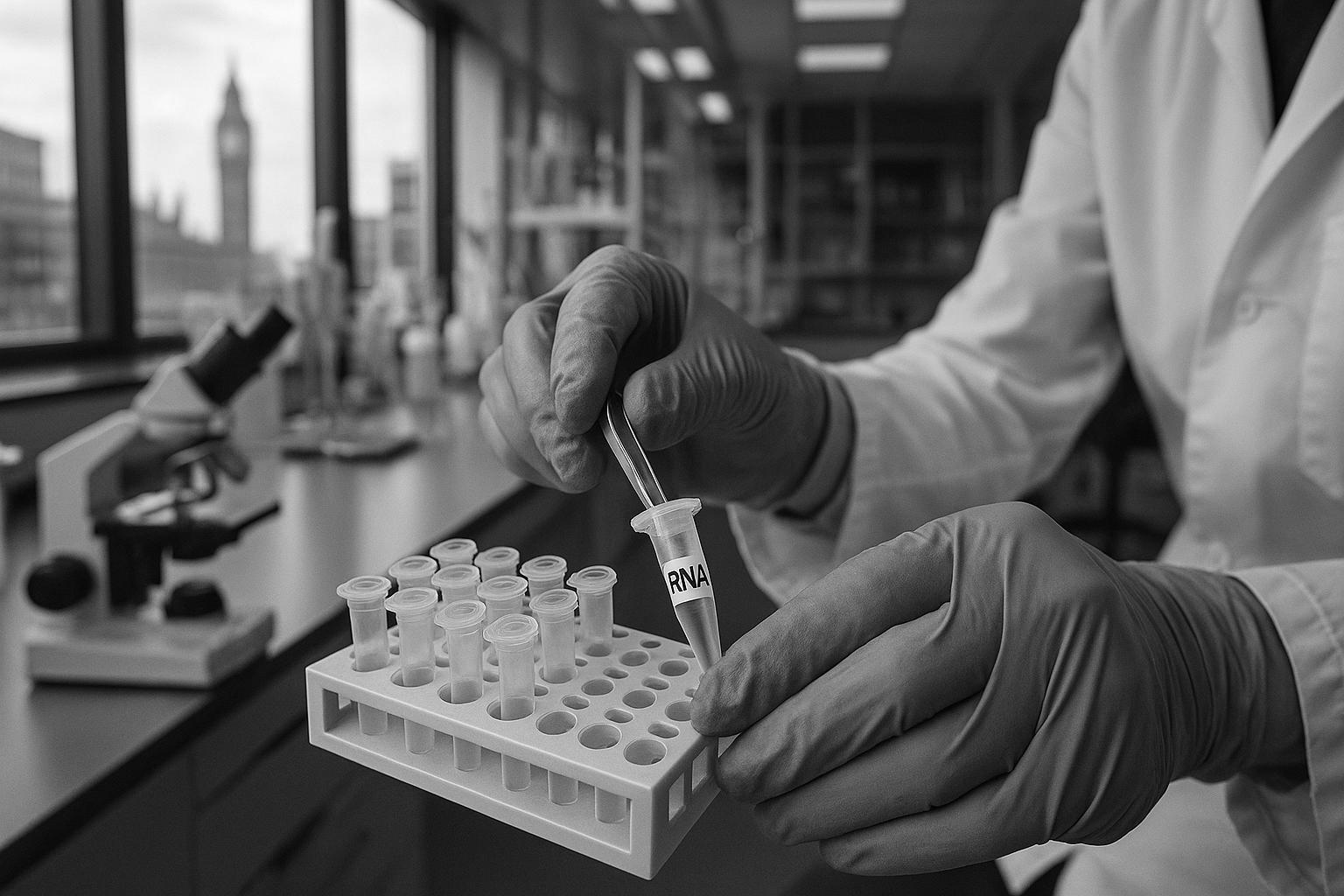Behind the striking glass façade of a cutting-edge facility in London's docklands, Dr Martina Esposito Soccoio diligently works with ribonucleic acid in a laboratory that is poised at the forefront of a significant medical breakthrough. Teaming with a group of researchers and clinicians at AviadoBio, a burgeoning British university spinout, she aims to develop innovative treatments for frontotemporal dementia (FTD), a degenerative condition that has largely eluded effective intervention until now.
Currently, there is no cure for dementia, which affects millions globally, yet AviadoBio's ambitions may herald a transformative approach to one of its forms. According to Professor James Rowe, a consultant neurologist at Cambridge’s Addenbrooke’s Hospital, “It may be one of the first dementias to have a definitive treatment—a cure if you like—allowing people to live much longer and much more normal lives.” FTD primarily impacts individuals aged 45 to 65, although it can manifest in those as young as their 20s, and is typified by severe changes in behaviour and language rather than memory loss, which often occurs later in progression.
The condition has received significant public attention with the recent diagnosis of actor Bruce Willis, who was struck by the “cruel disease” two years ago, a stark reminder of the personal toll FTD can take on families. The urgency of developing effective treatments is underscored by the estimated 40,000 individuals living with this disease in the UK and between one to two million across the globe.
AviadoBio’s pioneering therapy, known as AVB-101, zeroes in on a variant of FTD—FTD-GRN—linked to mutations in the progranulin (GRN) gene. Deficiencies in progranulin are detrimental to neuronal health, precipitating neurodegeneration. The company has formed an exclusive partnership with Astellas Pharma, focusing on targetting this genetic anomaly through a precise delivery system. Recent advancements reported indicate that the initial clinical trials are underway in multiple countries, including Poland and the United States, with the first patient treated earlier this year, a testament to the rapidly advancing nature of this research.
Clinical trials will follow participants for up to five years to meticulously assess the therapy’s long-term effectiveness. As expressed by David Cooper, AviadoBio’s chief medical officer, visual assessments of patients suffering from GRN mutations reveal significant brain atrophy, hence emphasising the need for early intervention and treatment. The key to AVB-101 is its method of infusion directly into the brain, utilising advanced neurosurgical techniques to restore healthy levels of progranulin, which is crucial for cellular maintenance.
The development of AVB-101 marks a defining moment not only for AviadoBio but also for the entire domain of dementia research. Scientists are optimistic; however, they remain cautious. While the therapy presents promising avenues, additional treatments from various pharmaceutical companies also target FTD, though none are focused specifically on the thalamus as AVB-101 is. The collaborative nature of this research, bolstered by substantial investments from industry giants and various universities, underscores a burgeoning life sciences sector in the UK that holds potential for future discoveries.
Interestingly, the personal stories of those affected by FTD are instrumental in shaping the focus of these clinical trials. Consider Jessica Crawford from Beverley in Yorkshire, who lost her mother to a different genetic variant of FTD. Her experience underscores the need for early diagnosis and awareness—crucial elements that can significantly alter the trajectory of care. With genetic implications assessed during her own family planning, Crawford represents the fusion of personal and scientific narratives in the fight against this devastating condition.
As AviadoBio continues to navigate the complexities of gene therapy, the hope remains palpable among patients, families, and researchers alike. The data expected to be published within the next year could provide a clearer picture of AVB-101's potential, propelling the quest for a disease-modifying therapy for FTD into a promising new era.
📌 Reference Map:
- Paragraph 1 – [1]
- Paragraph 2 – [1], [2]
- Paragraph 3 – [1], [5]
- Paragraph 4 – [1], [3]
- Paragraph 5 – [2], [5], [6]
- Paragraph 6 – [3], [4]
- Paragraph 7 – [1], [4]
Source: Noah Wire Services
